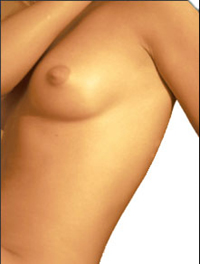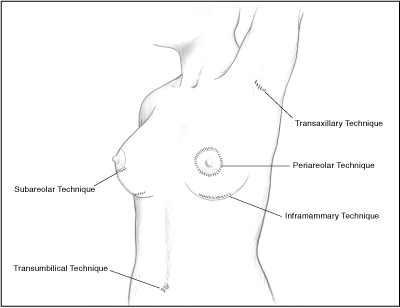 Breastfeeding After Breast Augmentation Surgery
Breastfeeding After Breast Augmentation Surgery  Breastfeeding After Breast Augmentation Surgery
Breastfeeding After Breast Augmentation Surgery
Breastfeeding after breast augmentation surgery is absolutely possible. Most women have some milk, but some may not have a full milk suppy for at least the first baby. However, every drop of milk is tremendously beneficial for your baby and there are many ways to increase milk production.
The original state of the breasts prior to augmentation is very important in predicting how much milk a mother can make after breast augmentation surgery. Although small breast size alone is not a risk factor for low milk production, certain breast types are known to be risk factors for insufficient glandular tissue.(1) These types include tubular-shaped breasts, widely spaced breasts (greater than 1.5 inches of flat space between them), undeveloped breasts, and asymmetrical breasts. When little glandular tissue exists to begin with, milk production capability is significantly reduced even before the surgical procedures occur.
Unfortunately, most women report that they are not advised that they may have an inherent lack of glandular tissue or that breast augmentation can reduce their ability to breastfeed.(2) As with all breast surgeries, severing ducts or nerves will result in lower milk production. The location, orientation, and extent of the incision determine how much milk production will be affected.(3) Surgeons often attempt to minimize scarring in breast augmentation surgery to improve the aesthetic appearance of the breast by placing incisions in less visible areas, such as on the areola or underneath the breast in the inframammary fold. An incision on or around the perimeter of the areola, particularly in the lower, outer quadrant, will result in reduced nerve response to the nipple and areola, significantly reducing milk ejection, which in turn reduces milk production.(4)

The location of the augmentation incision has a direct bearing upon milk production capability. An incision around the areola or across a portion of it will reduce nerve response more than an incision under the breast or in the arm “pit.” Placement of the implant can also affect breast functionality. An implant positioned directly under the glandular tissue is more likely to put pressure on the glandular tissue or structurally impede milk flow, resulting in reduced milk production over time, as compared to an implant positioned under the chest muscle away from the gland.
Breast augmentation techniques
References
(1) Neifert, M., Seacat, J., Job, W. Lactation failure due to insufficient glandular development of the breast. Pediatrics 1985 Nov; 76:5 823-8.
(2) Spear, S., ed. Surgeries of the Breast: Principles and Art. Philadelphia, PA: Lippincott-Raven, 1998.